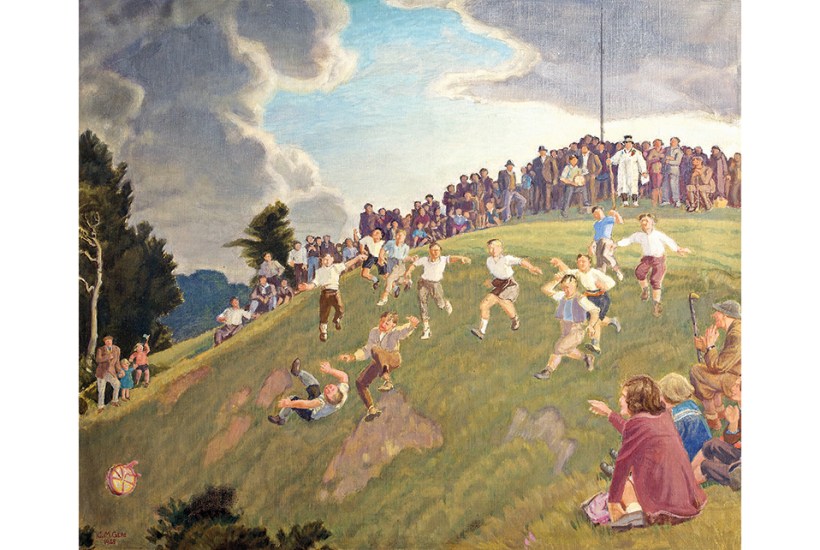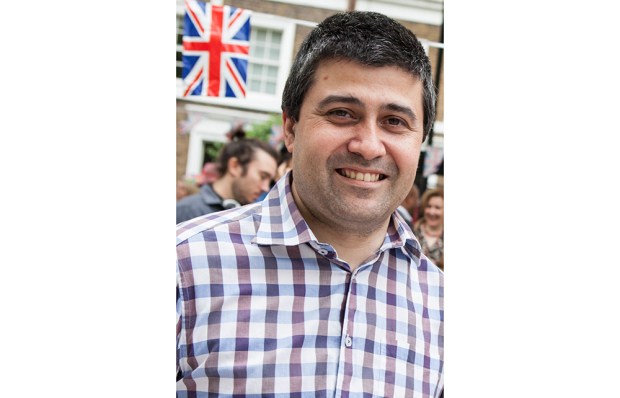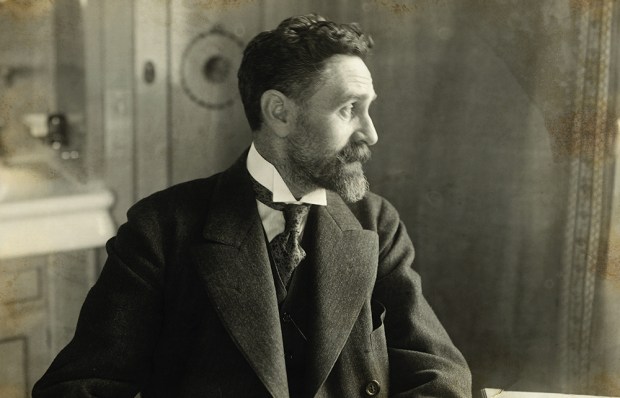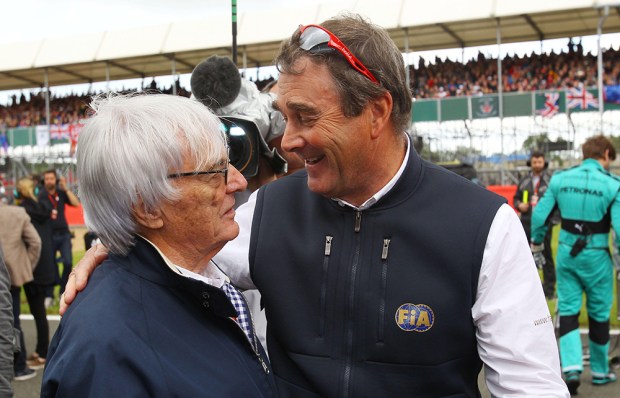‘Two mobs of men fighting over possession of a ball in a freezing, muddy river in Derbyshire,’ writes Harry Pearson, ‘is the British equivalent of the Rio Carnival.’ He’s not wrong. Brazil may have the sun, but we’ve got the capacity for mindless violence. It’s a trait expressed in many of the folk sports covered in this highly entertaining book.
The mass football games (such as the one in Ashbourne), which take place over pitches several miles long, aren’t quite as vicious as they once were. In a Georgian contest between the Men of Suffolk and the Men of Norfolk, nine players died. In Jedburgh, they used an Englishman’s severed head as the ball. Nevertheless, the modern contests are far from gentle. They remind Pearson of ‘those 1970s rugby union matches in which, if they’d removed the ball, the players would have carried on rucking in the mud without the slightest loss of focus or pleasure’.
At a shinty match in Scotland, Pearson is assured by a local that the sport is perfectly safe. At the exact moment he’s saying this, one of the players gets hit on the head by a stick, leaving ‘a gash above his eye that flapped like a second mouth’. The sound of the sticks colliding ‘sometimes attracts red deer stags who, mistaking it for the clashing antlers of their rivals-in-rut, turn up on the touchline, myopic with lust and searching for a fight’. Cumberland and Westmorland wrestlers would take this in their stride. One retired participant recalls away matches, and how returning home they’d keep an eye out for a field of cattle. ‘We’d get the coach driver to pull over and then we’d get in that field and have a competition to see who could topple a bullock the quickest.’
Even the clergy get dragged into the violence, or at least threats of it. The Leicestershire village of Hallaton holds an annual ‘Hare Pie Scramble’ (the pie isn’t made with hare, and for ‘scramble’ read ‘fight’). In 1790 a new vicar argued that the event had heathen origins, and so refused to fulfil his traditional duty of providing the pie. Soon a message was written in blood on the rectory door: ‘No pie, no priest, and a job for the glazier’. The vicar relented.
But it’s not all fists and fury. The Sussex game of stoolball was invented by milkmaids, who would hang a milking stool from a post or a tree, and use a milking bowl as a bat to play something rather like cricket. The first ever century was scored in 1868 by Gertrude Brand. She hit not a single boundary, meaning every run had to be completed in her floor-length skirt, bodice and hat. Another version of the game saw players running round a circle rather than in a straight line – most baseball historians see this as the forerunner of their sport. (This is not the only mention of America: apparently Abraham Lincoln was a fan of Cornish wrestling.)
Sadly, even folk sports have been tainted by drug scandals. In pigeon racing, the birds now have to be tested. The problem started in Belgium, where the sport was invented. In the 1920s, a chemist in Liège ‘perfected a particularly potent pigeon purgative that literally lightened a bird’s load during the race’. In the 1990s, someone who’d heard that Pearson was visiting Flanders asked him to bring back some ‘stuff for the birds’. He declined. ‘Later it crossed my mind that if the bloke really wanted to import illegal pigeon dope, he could get the birds to bring it in themselves.’
Thankfully the book avoids ‘self-consciously zany inventions such as bog-snorkelling and extreme ironing’. It’s about real sports, with their roots in real history. Tossing the caber originated in siege warfare, where the caber would be thrown against a castle wall so that troops could climb up it. Similarly, the Irish sport of road bowling was invented by soldiers of William of Orange, ‘who alleviated their boredom while besieging Jacobite strongholds by throwing cannonballs around’.
Some of the sports provided a route out of poverty. Before the first world war, the best crown green bowls players earned £750 a year, three times as much as a professional footballer. The Highland Games legend Donald Dinnie was once asked to repeat his throw of a heavy stone, as Queen Victoria had missed the original feat. ‘Two pounds,’ he replied. ‘I’ll no take a penny less.’ He got his money.
And there’s a nice reminder that we’ve always been worried about the country going to hell in a handcart. Writing in the 18th century, someone advocated the sport of skittles as a counter to ‘an overfed age of people insipid with ease and sloth’.
But in the end the next injury is never far away. Pearson hears about the Cooper’s Hill cheese-rolling event from the comedian Andy Smart. Describing the Gloucestershire venue down which contestants chase a wheel of cheese as ‘not so much a hill as a cliff’, Smart recalls the time he took part. This is a man who has run with the bulls in Pamplona no fewer than 62 times. But Cooper’s Hill? ‘Once was enough.’
Got something to add? Join the discussion and comment below.
Get 10 issues for just $10
Subscribe to The Spectator Australia today for the next 10 magazine issues, plus full online access, for just $10.
You might disagree with half of it, but you’ll enjoy reading all of it. Try your first month for free, then just $2 a week for the remainder of your first year.














Comments
Don't miss out
Join the conversation with other Spectator Australia readers. Subscribe to leave a comment.
SUBSCRIBEAlready a subscriber? Log in